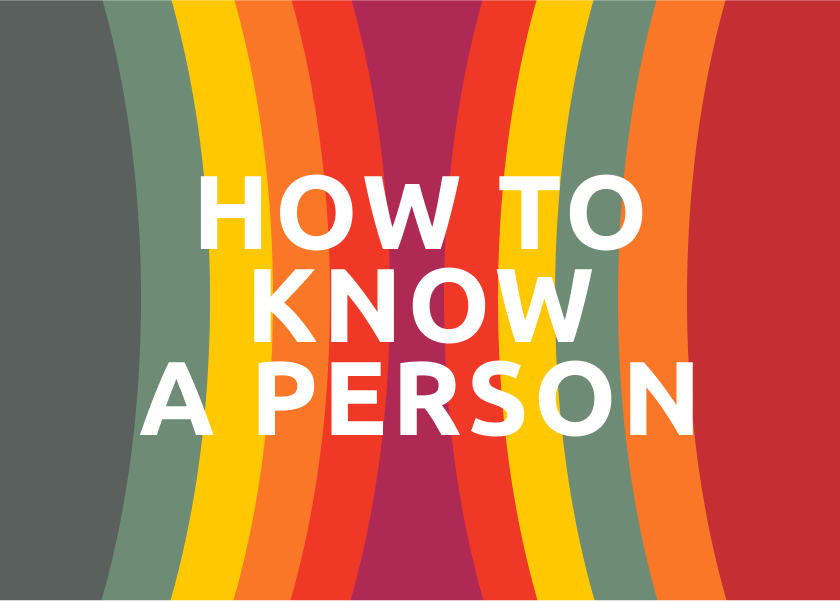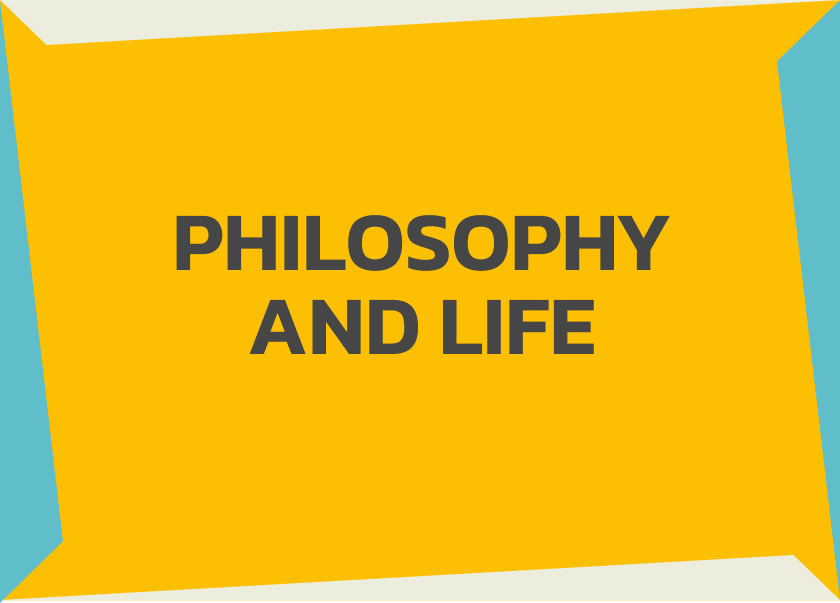How to Know a Person by David Brooks - Summary
Want deeper connections in your life? Learn the art of truly seeing and hearing others. Discover how to overcome biases, ask the right questions, and build stronger relationships. By reading this book you’ll understand humanity better.

The following is a summary and review of the book How to Know a Person by David Brooks.
The Art of Seeing Others Deeply
Have you ever felt truly seen and understood by another human being? In a world increasingly marked by disconnection and division, this fundamental human need often goes unmet. David Brooks' How to Know a Person: The Art of Seeing Others Deeply and Being Deeply Seen delves into the essential skills and mindsets required to bridge this gap, offering a profound exploration of how to move beyond superficial interactions to forge genuine connections. This insightful book, penned by a renowned author and commentator, has resonated with many seeking to improve their relationships and understanding of themselves and others. Whether you're short on time or simply want a solid grasp of its core principles, this summary provides a valuable overview of Brooks' key arguments and actionable advice.
Table of Contents
- About the Author
- Who Should Read This Book?
- Key Insights and Themes
- Detailed Summary
- Review
- Actionable Takeaways
- FAQs
- Conclusion
About the Author
David Brooks is a prominent American author, political commentator, and op-ed columnist for The New York Times. He is also a regular contributor to PBS NewsHour and Meet the Press. With a distinguished career in journalism and several bestselling books to his name, including The Second Mountain, The Road to Character, and The Social Animal, Brooks has established himself as a thoughtful observer of society, culture, and human nature. His work often explores themes of morality, character development, and the importance of community. How to Know a Person draws upon his extensive research and personal experiences to offer a practical guide to fostering deeper human connections.
Who Should Read This Book?
This book is for anyone who desires to improve their ability to connect with others on a deeper level. This includes:
- Leaders and managers who want to foster stronger team relationships and better understand their colleagues.
- Educators seeking to see and support their students more effectively.
- Therapists, counsellors, and social workers aiming to enhance their ability to understand and empathise with their clients.
- Anyone experiencing loneliness or a lack of deep friendships and who wants to build more meaningful connections.
- Individuals interested in self-improvement and developing greater emotional intelligence and social skills.
- People who want to navigate difficult conversations with more empathy and understanding.
- Those seeking to overcome their own biases and tendencies to stereotype others.
In essence, How to Know a Person offers valuable insights for anyone who interacts with other human beings and believes in the power of genuine connection.
Key Insights and Themes
Here are some key takeaways and main ideas from How to Know a Person:
- The importance of truly seeing and hearing others is fundamental to building strong relationships and a more connected society.
- Many of us are unintentionally "Diminishers" who fail to truly see others, often resorting to sizing people up and making quick judgments.
- Developing the art of "Illumination" involves paying just and loving attention to others, moving beyond our own self-preoccupation.
- "Accompaniment" is about being present for others, especially during times of struggle, without necessarily needing to offer solutions.
- Understanding that a person is a unique point of view and requires us to ask them how they see things, rather than assuming we know.
- Good conversations are crucial for deep connection and involve treating attention as an on/off switch, making others authors of their stories, and embracing pauses.
- Asking the right questions – humble, open-ended questions – can unlock deeper insights into another person's life and perspective.
- The epidemic of blindness and loneliness in modern society has significant negative consequences for individuals and communities.
- Hard conversations require awareness of the underlying emotional dynamics and the importance of showing respect.
- Empathy is a crucial skill that involves understanding and sharing the feelings of another.
- Understanding how people are shaped by their sufferings and helping them to reframe their narratives can be transformative.
- Recognising different personality traits can provide insights into how individuals approach the world.
- Viewing life as a succession of common life tasks can help us understand the struggles and goals of others.
- Everyone has a life story that shapes their identity, and understanding these narratives is key to knowing them deeply.
- Wisdom involves a compassionate understanding of others, gained through lived experience and deep reflection, and manifests in the ability to help others process their own thoughts and emotions.
Detailed Summary
The book is divided into two parts:
Part 1: I See You
1. The Power of Being Seen
Brooks argues that being seen and recognised is a fundamental human need. Feeling unseen can lead to a sense of worthlessness and disconnection.
2. How Not to See a Person
This chapter explores the ways we often fail to truly see others, including stereotyping, making quick judgments ("the size-up"), and focusing only on how others affect us. The "lesser-minds problem" leads us to believe we are more complex than others. The memoir "Fierce Attachments" illustrates how even close relationships can lack true seeing.
3. Illumination
Brooks introduces the concept of "just and loving attention", drawing on Iris Murdoch's philosophy that morality begins with how we attend to others. True seeing is a moral act and involves moving beyond our own biases and self-preoccupation.
4. Accompaniment
This chapter emphasises the importance of simply being present for others, especially during difficult times. It's about showing up and offering support without necessarily having to fix their problems.
5. What Is a Person?
Brooks explores the complexity of human beings, highlighting that each person has a unique inner world and point of view. He discusses how our brains actively construct our perception of reality based on our experiences and "affordances" – the opportunities for action we perceive.
6. Good Talks
This chapter delves into the art of meaningful conversation. Key elements include giving full attention, making the other person the author of their story by asking specific questions, not fearing pauses, and actively listening to understand rather than just to respond. Techniques like "looping" (paraphrasing to ensure understanding) can be helpful, though should be used authentically.
7. The Right Questions
Asking thoughtful, open-ended ("humble") questions is crucial for getting to know someone deeply. Vague questions shut down conversation. Questions that explore someone's motivations ("Why you?") and invite reflection can be particularly powerful. People generally long to be asked about themselves.
Part 2: I See You in Your Struggles
8. The Epidemic of Blindness
Brooks examines the increasing rates of loneliness and social disconnection in society. Feeling unseen can lead to defensiveness, suspicion, and self-loathing. The desire for attention can even manifest in destructive ways.
9. Hard Conversations
Navigating difficult conversations requires focusing on the underlying emotional dynamics ("the actual conversation") as much as the surface topic ("the official conversation"). Respect is paramount. It's essential to try to see the world from the other person's perspective ("step into their ken").
10. How Do You Serve a Friend Who Is in Despair?
This chapter focuses on how to support those suffering from depression or grief. It emphasises the importance of presence and making them feel deeply known.
11. The Art of Empathy
Brooks explores the nature of empathy, highlighting that it involves not just feeling for someone but also understanding their perspective. He discusses different levels of empathy and the importance of "idiot compassion" – showing positive regard while still challenging self-deceptions. Literature and acting can enhance empathy.
12. How Were You Shaped by Your Sufferings?
This chapter examines the transformative power of suffering. Helping people to process and reinterpret their difficult experiences can lead to post-traumatic growth. Exercises like reflecting on one's life year by year or engaging in expressive writing can aid this process.
13. Personality: What Energy Do You Bring into the Room?
Brooks discusses the "Big Five" personality traits (agreeableness, conscientiousness, extroversion, neuroticism, openness) as useful frameworks for understanding individual differences. Observing how people behave can give clues to their personality.
14. Life Tasks
Drawing on developmental psychology, Brooks outlines common "life tasks" individuals grapple with at different stages, such as bonding, career consolidation, and generativity (the desire to pass on wisdom and contribute to the next generation). Understanding these tasks provides a lens for seeing the underlying goals and struggles of others.
15. Life Stories
This chapter emphasises the crucial role of personal narratives in shaping identity and meaning. People construct their life stories by selecting key events and creating a coherent narrative. Many Americans tell "redemption stories". Narrative flexibility – the ability to revise one's story in light of new experiences – is important.
16. How Do Your Ancestors Show Up in Your Life?
Brooks explores the influence of family history, cultural background, and societal forces on shaping who we are and how we see the world. Our "imagoes" – deeply ingrained self-perceptions often rooted in childhood – can significantly impact our interactions.
17. What Is Wisdom?
In the final chapter, Brooks redefines wisdom not as dispensing advice but as the ability to see others deeply and help them understand themselves. Wise individuals create a safe space for reflection and help others navigate life's ambiguities. He concludes with examples of individuals who demonstrated this profound ability to see and understand others.
Review
How to Know a Person is a thought-provoking and insightful exploration of the fundamental human need to be seen and understood. Brooks blends personal anecdotes, social science research, and philosophical insights to create a compelling argument for the importance of developing our capacity for genuine connection. The book offers practical advice and frameworks for improving our conversational skills, overcoming biases, and cultivating empathy.
One of the book's strengths lies in its accessibility and engaging writing style. Brooks' personal reflections and the inclusion of vivid examples make the concepts relatable and memorable. The division of the book into clear parts and chapters also enhances its readability.
However, some readers might find the book's approach to be somewhat subjective, relying more on anecdotal evidence and philosophical reflection than rigorous scientific analysis. While Brooks draws on research, the emphasis often leans towards personal insights and observations. Additionally, the American context is prevalent throughout, which might make some examples less universally applicable.
Overall, How to Know a Person offers a valuable and timely reminder of the power of human connection in an increasingly disconnected world. It provides a useful guide for anyone seeking to deepen their understanding of others and build more meaningful relationships.
Actionable Takeaways
Here’s how to apply these lessons in real life:
- Practice active listening by giving your full attention, making eye contact, and minimising distractions during conversations.
- Ask open-ended, "humble" questions that encourage others to share their experiences and perspectives in their own way (e.g., "Tell me about...", "What was that like for you?").
- Resist the urge to immediately offer solutions or share your own similar experiences; instead, focus on understanding the other person's feelings and point of view.
- Be mindful of your own biases and tendencies to stereotype others. Actively challenge your initial judgments and seek to see the individual.
- Pay attention to the emotional undercurrents in conversations, not just the words being spoken.
- Embrace pauses in conversation to allow for reflection and to ensure you are truly listening before formulating your response.
- Practice "looping" or paraphrasing what you hear to ensure you understand correctly.
- When someone is sharing a story, ask specific questions to help them revisit the moment vividly and explore their feelings about it.
- Be present for others during times of difficulty; sometimes, simply showing up and offering silent support is the most meaningful thing you can do.
- Reflect on your own life story and how it shapes your perspective. Encourage others to share their stories as well.
- Cultivate "just and loving attention" by intentionally focusing on understanding and appreciating the unique qualities of others.
FAQs
- What is the main argument of "How to Know a Person"? The book argues that the ability to truly see and hear others is essential for building meaningful relationships and a more connected society. It provides practical guidance on developing the skills and mindsets needed to move beyond superficial interactions and foster genuine understanding.
- Is "How to Know a Person" a self-help book? While it offers practical advice and encourages self-reflection, "How to Know a Person" goes beyond typical self-help. It delves into the philosophical and psychological aspects of human connection, aiming to cultivate a deeper understanding of ourselves and others rather than just providing quick fixes.
- Does David Brooks offer specific techniques for better conversations? Yes, the book includes several practical techniques for improving conversations, such as treating attention as an on/off switch, asking specific questions to make others authors of their stories, embracing pauses, and using looping to ensure understanding.
- Why does the book emphasise the importance of seeing others during times of struggle? Brooks argues that being truly seen and supported during difficult times is crucial for healing and growth. "Accompaniment" – simply being present for someone – can be profoundly meaningful.
- How does "How to Know a Person" relate to Brooks' other works? Like his other books, "How to Know a Person" explores themes of character, morality, and the importance of community. It builds upon ideas presented in "The Road to Character" by focusing on the relational aspects of personal growth and the skills needed to connect with others ethically and deeply.
Conclusion
In How to Know a Person, David Brooks offers a compelling and much-needed guide to navigating the complexities of human connection. By illuminating the art of truly seeing and being seen, he encourages us to move beyond our own self-absorption and cultivate a genuine curiosity and respect for the inner lives of others. The insights and actionable advice within these pages provide a roadmap for building stronger relationships, fostering greater empathy, and ultimately creating a more connected and understanding world. Whether you are looking to improve your personal relationships, enhance your professional interactions, or simply deepen your understanding of human nature, this book offers valuable lessons that are well worth embracing.
As an Amazon Associate, ShelfHelp may earn money from qualifying purchases. Needless to say, ShelfHelp only includes affiliate links to books we recommend and think are worth your time reading.




